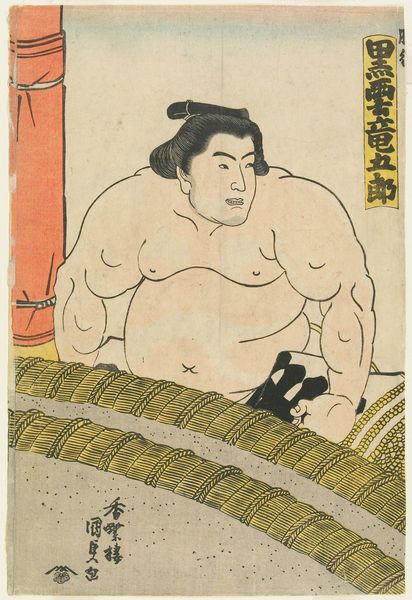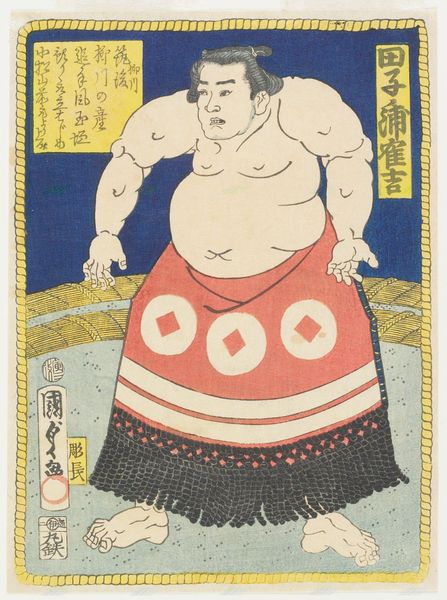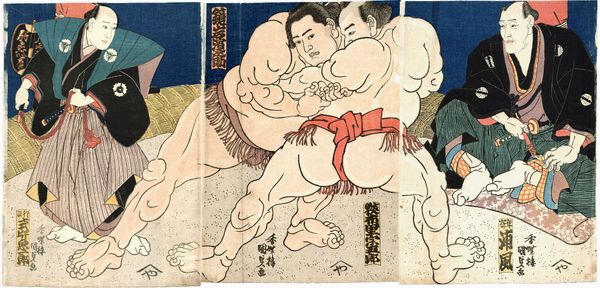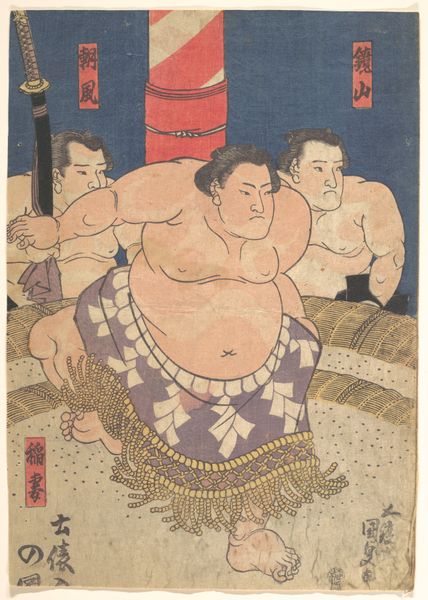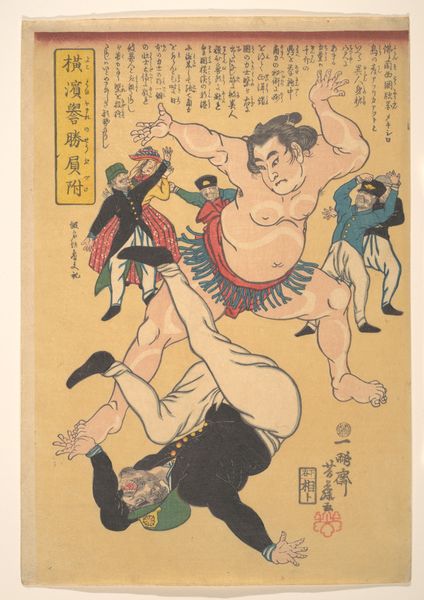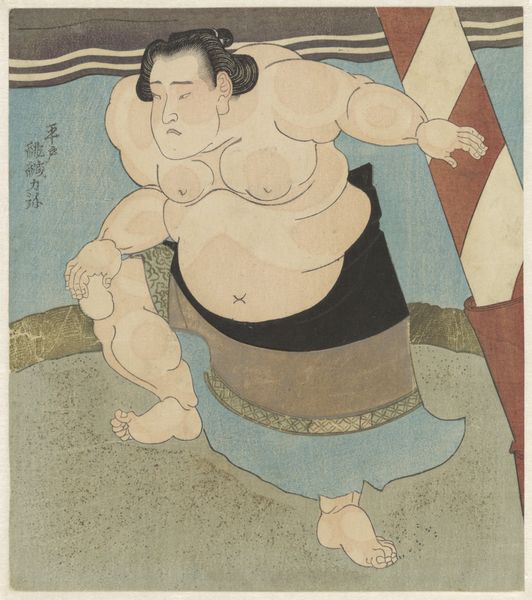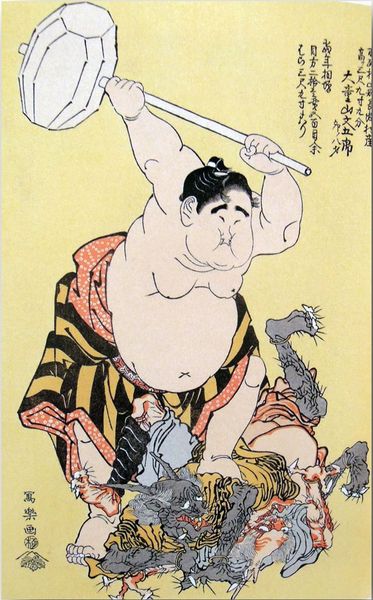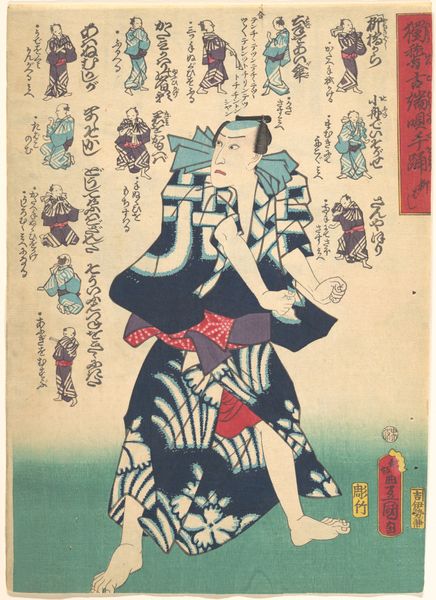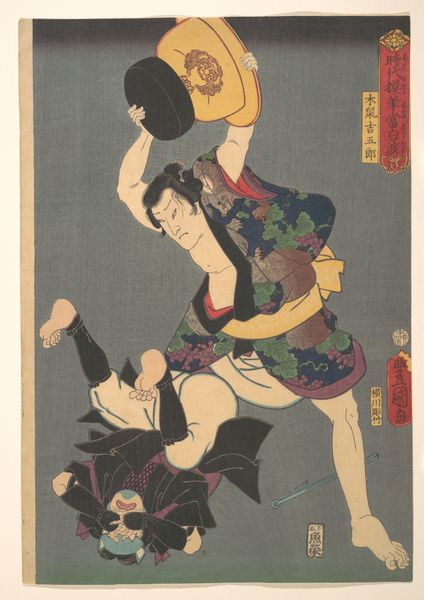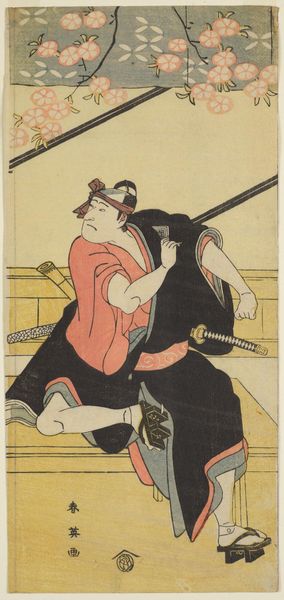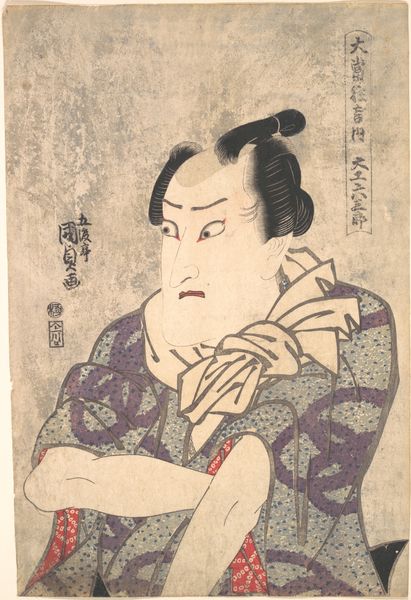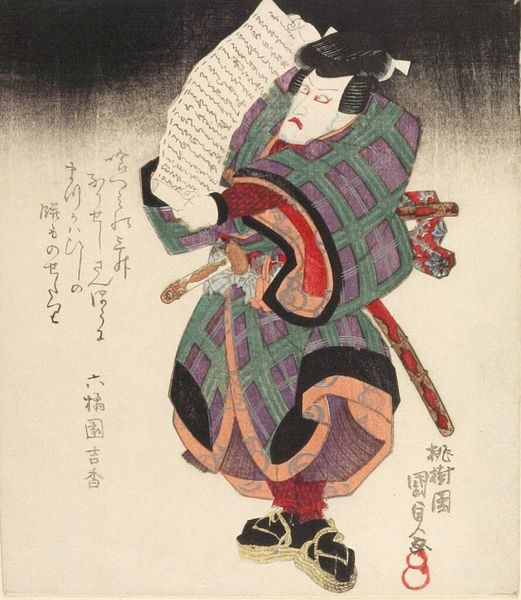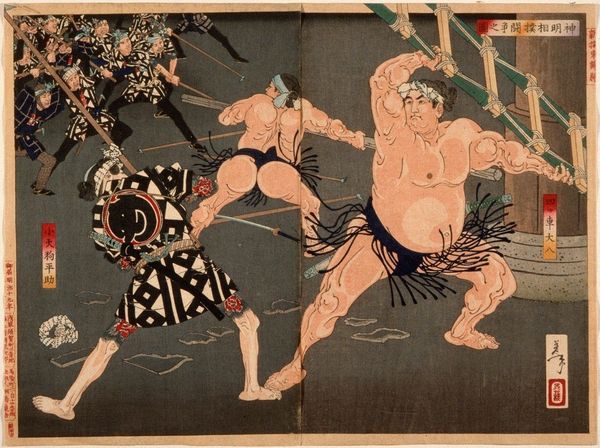
print, woodcut
#
portrait
# print
#
caricature
#
caricature
#
ukiyo-e
#
figuration
#
woodcut
Dimensions: height 258 mm, width 376 mm
Copyright: Rijks Museum: Open Domain
Curator: Here we have Utagawa Kunisada's 1844 woodcut print titled, "Ikezuki Geitazaemon naast een afdruk van zijn hand," which translates to "Ikezuki Geitazaemon Next to a Print of His Hand." It resides here at the Rijksmuseum. Editor: Wow, it's instantly striking! The exaggerated size of the hand juxtaposed with the wrestler—there's almost a playful critique of power and scale happening here. Curator: Exactly. Utagawa Kunisada was a leading printmaker of the Ukiyo-e style, popular in the Edo period. The exaggerated hand serves both as a reference to the sumo wrestler's power and also as something of a caricature, playing on the already theatrical nature of the sport and its celebrity figures. The placement of the hand against a figure makes it hard to define who or what dictates power within Japanese culture. Editor: It also draws attention to the body, doesn't it? The sumo wrestler's physicality, his size, and even the rendering of his flesh, are impossible to ignore. In a society that often regulated bodies, the sumo wrestler held a unique position, both celebrated and perhaps subtly feared. Curator: Yes, it's a paradox. Sumo wrestlers were popular figures but also occupied a space outside the typical social hierarchy. These prints, and Utagawa's work in particular, were crucial in popularizing these figures and reinforcing ideas about masculinity, strength, and cultural identity. Editor: I think too about the idea of the 'print' itself – the reproduction, the multiple. How does the artwork participate in a wider cultural conversation of body image and celebrity? Curator: Utagawa’s prints served as a mass medium, bringing images of sumo wrestlers, actors, and courtesans into homes across Japan. The caricature style suggests both admiration and playful mocking of cultural icons, thus engaging an emerging visual culture within Edo-period society. It’s a commentary on power dynamics embedded in celebrity culture, even in a highly regulated society. Editor: It truly invites us to question the symbols of power, both within and outside the frame. I now feel that by examining such social cues of the mid 1800s, we’re given license to think critically about contemporary symbolism in our lives today. Curator: I concur. This print certainly demonstrates the intersection of commerce, social dynamics and body politics during this fascinating era.
Comments
No comments
Be the first to comment and join the conversation on the ultimate creative platform.

